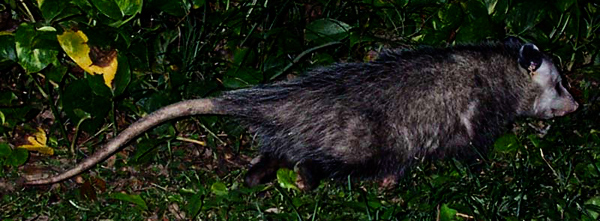- info@wildlifeanimalcontrol.com
Call us for help in your town
Wildlife Control Education
What are some of the Symptoms of a Sick Opossum?
Opossums are mammals. Living creatures that exhibit significant expressions in various circumstances. For example, they are scared when exposed to dangers and annoyed if disturbed intentionally. Likewise, these marsupials are prone to illness due to unhealthy surroundings and parasite invasions. Like other animals, these nocturnal beings exhibit proper symptoms of diseases which could be identified quickly and proper treatment is provided to take the animal out of danger.

Some distinguishable symptoms with their associated diseases are mentioned below: If your possum is passing bloods clots or black feces, then it might be a case of diarrhea due to unsanitary conditions or stress which can be handled by providing a stress-free environment and hydrating via fluids.
If the symptoms manifest unwell and they are disinterested in feeding with a persistent cough, nasal discharge and effort breathing, then it is a case of pneumonia and the need for emergency treatment.
In Candidiasis, white plaques occur in the possum’s mouth so he cannot suck. A yellow-mustard stool color confirms the disease.
Ectoparasites are external parasites such as lice, ticks and fleas occupying mammal fur. Acircular zone of fur loss is a common sign. Depression, rapid breathing and pale gums are also significant in such cases. A slender, dehydrated dermatitis victim is appealing for cure. The possum is sprayed with pyrethr in to control the disease.
Dehydration is noticed through tented skin, sunken eyes with skin rolled between the fingers. These conditions require rehydration via water and proper electrolyte balance.
If some poison is ingested by the mammal then the significant symptoms include vomiting, convulsions, misbalanced internal hemorrhage and paralysis. In such cases antidotes must be provided to the victim and if antidote is not available then proper measures should be taken to bring the animal out of the trauma.
Bushfires may lead to smoke inhalation, dehydration, severe burns with shock, disturbed lungs, and red eyes. A pinkish paw sole will identify the severity of burn. The more black the soles are the more intense is the degree of burn. Soothing creams are applied in such cases and vets are contacted for emergency.
Shock—an injured animal may well suffer from shock, provide a WQD, which is a stress-free surrounding when shock is manifested with bleeding that needs attention prior WQDF. Blood loss, fear or diarrhea is the causes of shock. A vet can decide the line of treatment for the shocked animal.
Corneal Opacities is a disease associated with eyesight and the symptoms include eye impairment causing eye damage, congenital or traumatic causes can lead to this pathology and formed in the eye due to infection. Vets can provide appropriate eye ointment, antibiotics, or exclusive treatment for such conditions.
Hence, if you are able to identify the disease through visible symptoms, go for the first aid kit or call the vet immediately.
Go back to the How to get rid of opossums home page.
Need opossum removal in your hometown? We service over 500 USA locations! Click here to hire us in your town and check prices - updated for year 2020.

















